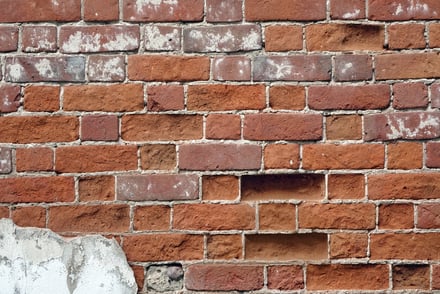When harsh weather conditions impede outdoor activities in the colder months, homeowners often turn to tasks like painting and other cosmetic repairs. However, owners of historic brick homes might want to consider this time of year to be the perfect opportunity to turn their attention to the interior brick walls. To maintain a historic home’s aesthetic appeal and determine whether repairs are necessary, regular assessments of interior brick walls are essential. Winter is the perfect time to inspect the condition of your interior brick walls.
Why Should We Inspect Our Interior Brick Walls?
The brick walls inside Victorian-era homes play a critical role in the overall structure. Unlike modern construction, historic brick homes built before 1920 feature load-bearing walls—meaning there is no underlying support system; the brick itself is the structure. Even if only some of your interior brick walls are visible, check them thoroughly since they can give clues as to the condition of the rest of your home.
What Should I Look For When Inspecting Interior Brick Walls?
With a historic brick home, it’s normal to have some wear and tear on the bricks. You may find cosmetic scratches that don’t interfere with the brick itself. It’s more important to look for and focus on the signs of damage, which if not repaired and maintained can threaten your house’s structural integrity.
The Condition of the Mortar
Mortar is known for its longevity, but it doesn’t last forever; eventually, it deteriorates. This can be due to fluctuations in temperature or humidity, the house shifting or settling, or possibly that the mortar simply reached its 25-year lifespan.
What you want to look for specifically is cracking, crumbling, or missing mortar. If you find any of these issues, having the wall tuckpointed as soon as possible can prevent bricks from coming loose and compounding your repair problems. If the cracks or gaps in the mortar are large or worsening, call a historic brick expert immediately so they can assess the situation and provide an optimal solution.
The Condition of the Brick
You’ll want to confirm your bricks are free from deep chips and don’t show any signs of cracking. Additionally, the bricks shouldn’t move. If any are loose, they should be inspected and reset or replaced by a professional as soon as possible.
Just like with mortar, if there is a large section of loose or cracked brick, or if bricks suddenly begin cracking without explanation, you should contact an expert, as this could indicate a serious structural risk to your historic brick home.
Remember, bulging brick foundations or walls are a structural emergency and cannot be ignored. Contact a historic brick restoration expert immediately.
The Signs of Water Infiltration
Common indications of water entering your home are ‘weeping’ brick walls, dark or discolored brick, and damp baseboards or carpets. Efflorescence, the white residue left over when water forces the natural salts out of brick, is a telltale sign that some moisture problems must be addressed. Although efflorescence and other signs of water problems can occur on any wall, you should keep a close eye on your basement bricks, as those are often one of the places where they first appear.
The Right Way to Repair Interior Brick Walls
Brick walls require a process called tuckpointing. Tuckpointing is the renewal of mortar joints (brick repair or replacement is done simultaneously). Tuckpointing a historic brick home requires the use of historically accurate lime-based mortar and specialized craftsmanship, using traditional techniques. Historic brick is also a specialty item; vintage brick is not interchangeable with those made today. Using the wrong materials will damage the interior walls and potentially cause further structural concerns. It’s best to leave historic brick tuckpointing to the experts and enjoy the peace of mind of a long-term structurally sound repair.
Renaissance Development, experts in traditional tuckpointing methods, specializes in brick repair and restoration projects in Capitol Hill and many other historic neighborhoods in Washington, DC. Contact us today for expert advice on the interior brick walls of your historic brick home.
Tags:
Interior brick walls, old brick, Historic Integrity, Old Brick Home Inspection, crumbling brick, tuckpointing, historic brick home, historic brick, Historic Brick Home DC, Old Brick Home in DC, Historic Homes DC, Brick walls, Old Brick Home Site Evaluation, Old Brick Home Inspection DC, Brick Repair, Historic Home, brick structural integrityNov 30, 2023 9:00:00 AM



